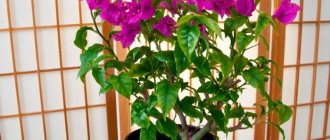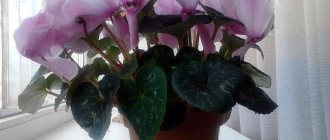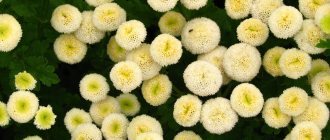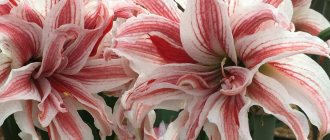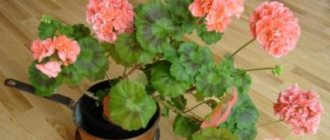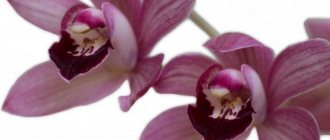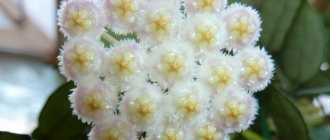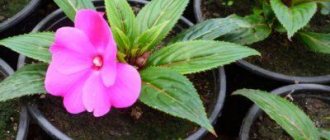Aphelandra is a beautiful evergreen plant that attracts many gardeners with its chic decorative leaves and unusual flowering. These original flowers are often used to decorate not only home interiors, but also halls, exhibition halls, and are also grown in greenhouses and winter gardens. We will tell you in this article how to properly care for a fastidious exotic beauty so that she pleases with a spectacular appearance. If you follow all the recommendations, the flower will become a luxurious decoration and will allow you to admire its beauty for a long time.
Always decorative
Aphelandra is a representative of tropical flora, a moisture-loving and heat-loving flower of the acanthus family. It is grown as an ornamental leafy and ornamental flowering houseplant. This is a perennial subshrub or shrub with large contrastingly colored leaves, in nature reaching a height of two meters. Domestic aphelandras grow no more than 1–1.3 m, and for the most part they are lower, especially if you buy a compact variety.
Aphelandra sap is considered poisonous, so pruning and replanting is carried out with gloves.
The leaf plate of the flower is shiny, can be corrugated and smooth. The color is variegated: on the green surface of the leaf there is an ornament of white or silver stripes along the middle and lateral veins.
Aphelandra flowers are small, but the bracts are very decorative: they are bright and collected in the likeness of a faceted spike or pyramid 10–15 cm long. There are orange, yellow and red colors.
Aphelandra bracts are more decorative than flowers
The flower's homeland is considered to be South American and North American tropical rainforests.
It is considered to be a very finicky plant and requires a lot of effort to grow successfully. This is not entirely true: if you initially provide the aphelandra with optimal conditions for it, it will grow and delight you with its flowering.
Characteristics, description of the plant
Aphelandra is a whole genus of shrubs, including about 60 different species. Their homeland is the tropical part of Central America and Brazil. This fact explains the need for high air humidity. In the wild, aphelandra can grow up to 2 meters, in an apartment - 30-50 centimeters.
The leaves are oblong, up to 25-30 centimeters long and tapering at the end. The surface is smooth, dark green, with well-defined silver veins.
Flowering begins in late summer - early autumn, when other indoor plants have already finished blooming. The inflorescences have the shape of a cone, 10-20 centimeters in size.
Varieties for home cultivation
More than 170 varietal variations are found in nature. Only two species have adapted to be kept indoors - aphelandra protruding and aphelandra orange, however, the second species is extremely difficult to find on sale.
Aphelandra squarrosa can grow in a pot up to 130 cm, and this flower grows quickly, so most gardeners prefer to buy its more compact hybrids: Louise, Brockfield, Denmark.
Orange aphelandra (Aphelandra aurantiaca) is a low-growing shrub with a fleshy stem. As the plant matures, the trunk gradually becomes lignified. This type of aphelandra has large silvery-green leaves. The flowers are tetrahedral, bright orange. Flowering lasts about 7 days. The bracts and flowers of all varieties of aphelandra protruding are bright yellow . Under comfortable conditions, it blooms from June to November; on average, flowering lasts 6 weeks.
Photo gallery: aphelandra varieties for indoor keeping
The leaves of Aphelandra orange are silvery-green, without contrasting veins.
Variety Louise is a medium-height domestic shrub
If you are attracted to patterned leaves, choose the Fitz Prinsler variety.
The most compact varieties are considered Brockfield and Denmark
Video: compact aphelandra
Kinds
Of the large number of wild aphelandra species, about a dozen are suitable for growing in apartment conditions. The most popular are the low-growing varieties, and the most popular is Aphelandra protuberans (Scuarossa). Known indoor species:
- Protruding (or squarossa) is a low-growing plant with reddish stems, large leaves and light veins. Produces bright yellow flowers. In turn, it is divided into varieties, among which the most famous are squarrosa Louisae and squarrosa Dania.
- Tetrahedral - differs in its dimensions, and can grow up to 1 meter in height. The leaves are green, up to 30 centimeters long and 15 centimeters wide, oval in shape. The flowers are bright scarlet, large, shaped like ears of corn.
- Golden (orange) is a low-growing variety with a thick, succulent stem, which becomes lignified as it grows. It has large oval-shaped leaves, up to 25 centimeters in size. The flowers are bright orange, collected in a tetrahedral inflorescence, with a total height of 10-15 centimeters . It differs in that flowering usually lasts no more than 1 week.
How to Care for a Rainforest Guest
Growing aphelandra is quite difficult. It does not tolerate drafts and requires compliance with all maintenance rules. Violations of growing conditions can lead to deterioration in appearance or disease.
General conditions of detention by season - table
| Season | Temperature | Humidity | Watering | Lighting | Top dressing |
| Winter |
| Moderate | 1 time per week | Additional artificial lighting | Not required |
| Spring | About 20°C | Increased: frequent spraying | Generous, 2–3 times a week | Bright diffused light | Once every 1–2 weeks |
| Summer | 22–25°С | ||||
| Autumn | 18–20°С | Moderate | 1 time per week | Additional artificial lighting | Once every 1–2 months |
The nuances of watering and fertilizing
The flower requires regular and fairly abundant watering, especially in summer. It is important to ensure that water does not stagnate in the pot and tray, as this can provoke putrefactive processes. In the hot season, the soil should be well moistened, and in the cold it is enough to water as the earthen clod dries out. It is necessary to spray the leaves several times a day in summer, and once every 2-3 days in winter.
The plant requires regular mineral fertilizing, as the supply of microelements in the substrate is actively growing and quickly depleted. Fertilizers are applied once every 1–2 weeks during the period of active growth and vegetation. During the cold season, occasional feeding is carried out. Use complex fertilizers containing potassium, phosphorus and nitrogen.
During the period of active growth, fertilizers are used for ornamental leafy plants, and during flowering - for ornamental flowering plants.
Bloom
In indoor conditions, aphelandra usually blooms in early summer. A large inflorescence pleases for several weeks. Flower growers recommend removing it after flowering, since there is a possibility of getting a fruit, and in this case, after successful fruiting, the aphelandra may end its life cycle and wither.
In order to regularly observe the flowering of a tropical pet, it is necessary to give the flower a period of rest.
Rest period
The plant usually goes into rest mode immediately after flowering. From about mid-autumn to early spring, the flower is placed in a bright, cool room with an air temperature of 16–20°C. Carry out rare spraying and watering as the soil coma dries out. With the arrival of spring, the aphelandra is again moved to its permanent place.
Trimming
Due to active growth, the plant very quickly stretches out, loses its compactness and attractiveness, so it is worth pruning in a timely manner. Pinching the buds on the upper shoots of young specimens allows you to form a neat crown and add splendor. It is recommended to trim adult plants in early spring, removing up to half the length of the stems. After the pruning procedure, it is necessary to increase foliar spraying.
Aphelandra is a fast growing plant that requires pruning and shaping.
Problem solving
Problems with aphelandra usually begin with improper care. They can manifest themselves in different ways, but if you do not respond to SOS signals, the flower will die very quickly.
This aphelandra was most likely kept in a cold draft
So, the main thing is to diagnose the cause of the deterioration in time and correct the shortcomings.
Maintenance errors and their elimination - table
| Problem | Cause | Elimination |
| Falling leaves | Insufficient watering | Adjust watering mode |
| Draft or low room temperature | Move to a warm place without drafts | |
| Plenty of bright sunlight | Cover or remove the plant from direct sunlight | |
| Lack of nutrients in the soil | Adjust the feeding mode | |
| Dry air | Spray the leaves every day, place the pot on a tray with wet drainage | |
| Wilting plant | Cold draft | Move the flower to another place |
| Brown leaf edge | Mold damage | Remove infected leaves and treat the plant with a fungicide according to the instructions. |
| Insufficient humidity | Spray the leaves every day, place the pot on a tray with wet sawdust | |
| Brown spots | Excessive amount of bright sun | Regularly ventilate the room or change the location |
| Lack of fresh air | Shade or rearrange the plant | |
| Shrinking of leaves | Lack of minerals | Adjust the feeding mode |
| Potty too tight | Transplant into a larger pot |
Thanks to its poisonous juice, this flower rarely gets sick, but overwatering is detrimental for it: fungal diseases - rot - can develop. In addition, a plant weakened by improper care loses its immunity and is easily attacked by pests.
Diseases and pests of aphelandra - table
| Source of damage | Signs of the disease | Prevention | Treatment |
| Shchitovka | Brown plaques and sticky drops on the leaf plate | Regular inspection and wiping of leaves with a damp cloth | One-time or weekly (in case of severe infection) treatment with chemical preparations Fitoverm or Actellik |
| Falling leaves | |||
| Mealybug | Whitish coating on leaves in the form of cotton wool | Wiping with soapy water followed by treatment with insecticides | |
| Aphid | Deformed tips of the sheet plate | Treatment with Akarin, Iskra Bio or infusions of plants with a pungent odor, such as wormwood | |
| Drying leaves | |||
| Insect colonies on leaves | |||
| Root rot | Roots darkened and softened |
| Surgical. Cut off the affected parts of the root system (if all the roots are affected, the plant cannot be saved), wash the remaining roots, sprinkle the sections with crushed coal and after a couple of hours transplant the flower into new disinfected soil with good drainage. |
| The leaves gradually turn yellow and wither |
Photo gallery: acanthus lesions
When aphids infest the plant, colonies of insects are clearly visible
Mealybug looks like a white cotton wool-like coating
When infested with scale insects, brown sticky spots appear on the plant.
A plant affected by rot stops growing and gradually withers
Parasites and diseases
The leaves become covered with dark spots. Necrotic spots on all parts of the flower are a symptom of the presence of gray rot.
How to solve this problem: immediately remove the infected parts and treat them with special chemicals.
Spots on the back of the leaves. This symptom may indicate that the plant is susceptible to infestation with scale insects.
We recommend reading: “Snapdragon Flower”
How to solve this problem: remove pests with a cotton swab or cloth soaked in alcohol. If the flower is not too big, you can also wash it with soap.
The presence of small former parasites on the flower. If small insects of a yellowish-white or greenish color were noticed, then we can say with almost 100% certainty that these are aphids.
How to solve this problem: treat the plant with specific pesticides, which can be easily purchased at a specialized center.
Reproduction
Aphelandra can be propagated in two ways: seeds and cuttings. The second option is more preferable, since after fruiting the mother plant often dies.
Seeds
Well-ripened seeds are collected and immediately sown in the substrate. A mixture of sand and leaf soil (1:4) is used as soil. For germination, create greenhouse conditions and a temperature of at least 25 degrees. The greenhouse needs to be ventilated every day for 20 minutes. The grown seedlings are planted in small pots.
Aphelandra seeds are about 5 mm in diameter
Cuttings
Vegetative propagation is a much more reliable and simpler method. Cuttings are carried out from March to May (less often in winter or summer). For this:
- Annual shoots up to 15 centimeters long are cut. They must have at least two leaves.
- The cuttings are treated with drugs that stimulate root formation: Atlet, Baikal EM-1, Kornevin and others.
- Rooting is carried out in a moist peat or sand substrate. Create a greenhouse environment by covering the pot with cuttings with film or glass.
One way to create a greenhouse is to place containers with plants in a transparent plastic container.
- The container with the cutting is placed in conditions with diffused light and a temperature in the range of 22–24°C.
- Ventilate the greenhouse for 10 minutes a day.
- Rooting occurs within 1–2 months. After this, they are transplanted into small pots and begin to be cared for like adult plants.
Aphelandra cuttings take up to two months to root
History of appearance in Europe
Aichrizon flower: care and flowering at home
After travelers brought the decorative aphelandra flower to Europe, it acquired the status of a houseplant. They began to breed it in greenhouses due to the harsh winters. In conditions close to the tropics, varieties of aphelandra Roeslia, tetrahedral, Sinclair, most beautiful and many others are grown. Several varieties of aphelandra squarossa are cultivated: Louisae, Dania, Leopoldii.
Pink aphelandra bloomed
Reviews about growing aphelandra
I bought aphelandra in the spring, threw leaves all summer and eventually died. Although I like her, I won’t have her again. A very capricious plant.
raduzhnaya
https://forum-flower.ru/showthread.php?t=111
I had an aphelandra before, and I don't want to bother with it anymore. Even with high humidity it still doesn't feel right. Capricious, that's for sure. It also sheds its lower leaves all the time, and this is a natural process for it, so it needs to be renewed periodically. Well, it blooms normally and rests for the winter.
Cheremisova Galina
https://forum-flower.ru/showthread.php?t=111
A yellow flower in combination with green succulent leaves looks great, just to dilute the dull room atmosphere and add lively and bright flowers.
Adolf
https://rastimdoma.ru/content/afelandra
I thought that only my aphelandra was wasting away, but it turns out that this is her “birth illness”.
Alyonka
https://otvet.mail.ru/question/23135951
